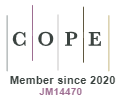Nocturia and others urinary symptoms in three stages of postpartum according mode of delivery
DOI:
https://doi.org/10.5585/conssaude.v15n2.6307Palavras-chave:
Urinary Incontinence, Nocturia, Quality of Life.Resumo
Introduction: There are risk factors causing urinary symptoms associated with childbirth. The aim was to investigate the presence of urinary symptoms in postpartum. Methods: Prospective cohort study was undertaken. The women were evaluated three times. The first interview was face-to-face at 2 days after the childbirth. At 2 and 8 weeks after delivery, the patients were interviewed by telephone. Results: 132 women were divided into two groups according to the mode of delivery: VG (vaginal delivery group) and CG (cesarean group). The average age of the women was 25.54 (±5.65) years in VG and 25.23 (±5.26) years in CG (p = 0.869). The most frequent symptom in both groups was nocturia. Conclusion: urinary symptoms tend to worsen throughout the postpartum period, regardless of the mode of delivery.Downloads
Downloads
Publicado
06.10.2016
Como Citar
1.
Angelo PHM, Matias MGL, Azevedo MAR de, Almeida LM de, Cabral Micussi MTAB. Nocturia and others urinary symptoms in three stages of postpartum according mode of delivery. Cons. Saúde [Internet]. 6º de outubro de 2016 [citado 13º de agosto de 2025];15(2):175-82. Disponível em: https://periodicos.uninove.br/saude/article/view/6307
Edição
Seção
Artigos
Licença
Copyright (c) 2016 ConScientiae Saúde

Este trabalho está licenciado sob uma licença Creative Commons Attribution-NonCommercial-ShareAlike 4.0 International License.
Visualizações
- Resumo 257
- PDF 152








